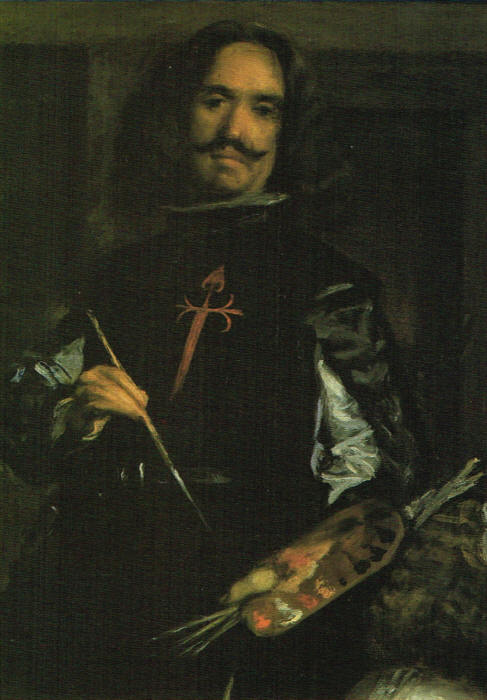"Las Meninas"
(Spanish for
"The Maids of Honor") is a 1656
painting by Diego Velazquez, the leading artist of the Spanish Golden Age,
exposed at the Museo del Prado in Madrid. The work's complex and
enigmatic composition raises questions about reality and illusion, and
creates an uncertain relationship between the viewer and the figures
depicted. Because of these complexities,
"Las Meninas"
has been one of the most widely analyzed works in Western painting.
The painting shows a large room in the
Royal Alcazar of Madrid during the reign of King
Philip IV of Spain, and presents several figures, most identifiable from
the Spanish court, captured, according to some commentators, in a particular
moment as if in a
snapshot.
Some look out of the canvas towards the viewer, while others interact among
themselves. The young
Infanta Margaret Theresa is surrounded by her entourage of
maids of honor,
chaperone, bodyguard, two dwarfs and a dog. Just behind them, Velazquez
portrays himself working at a large canvas.
|

Velazquez: Detail of his
self-portrait in "Las Meninas"
|


![]()
![]()